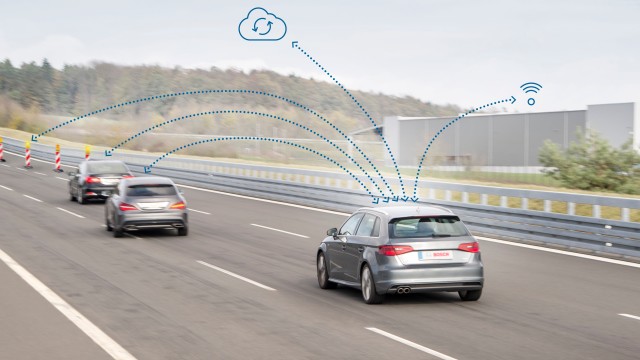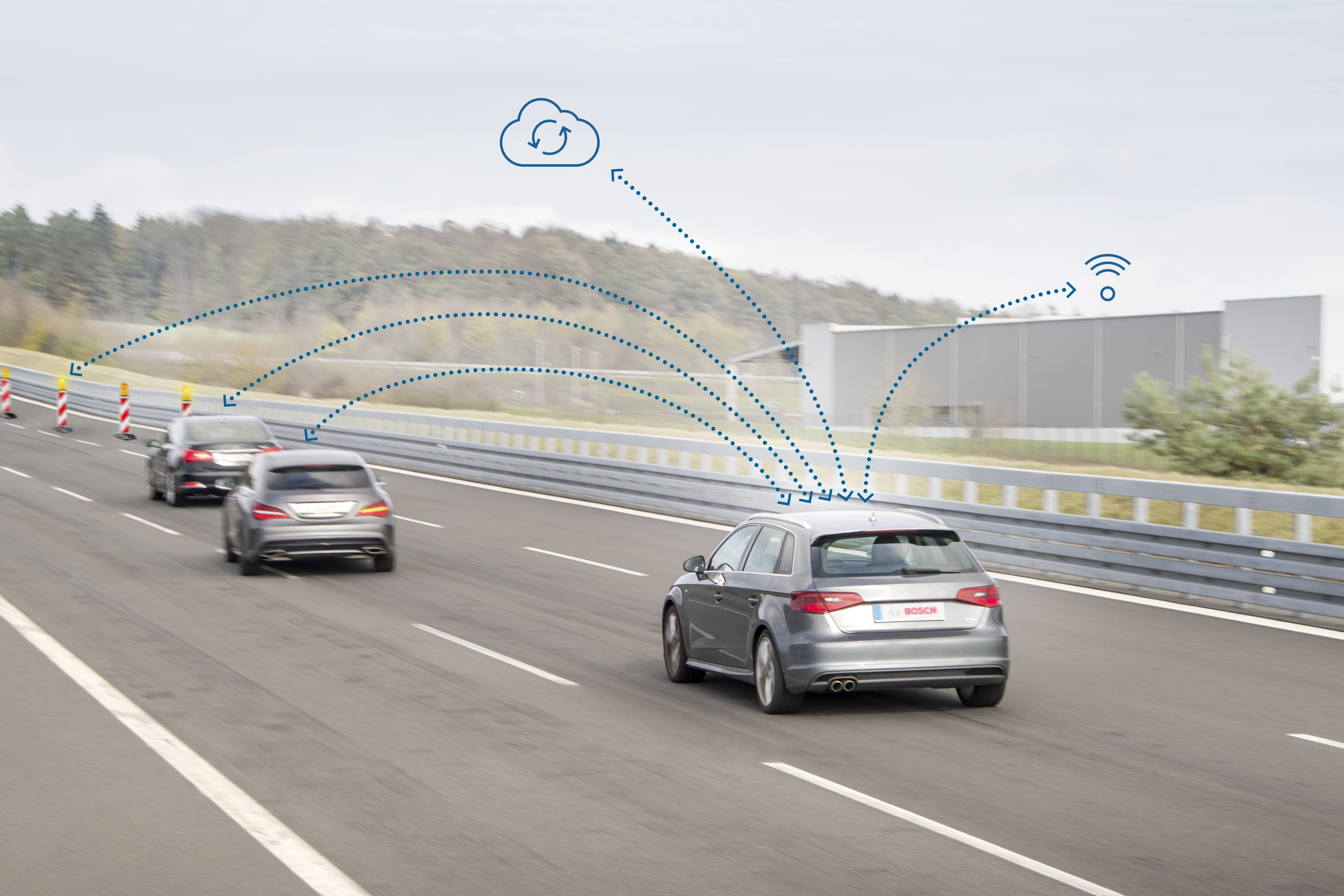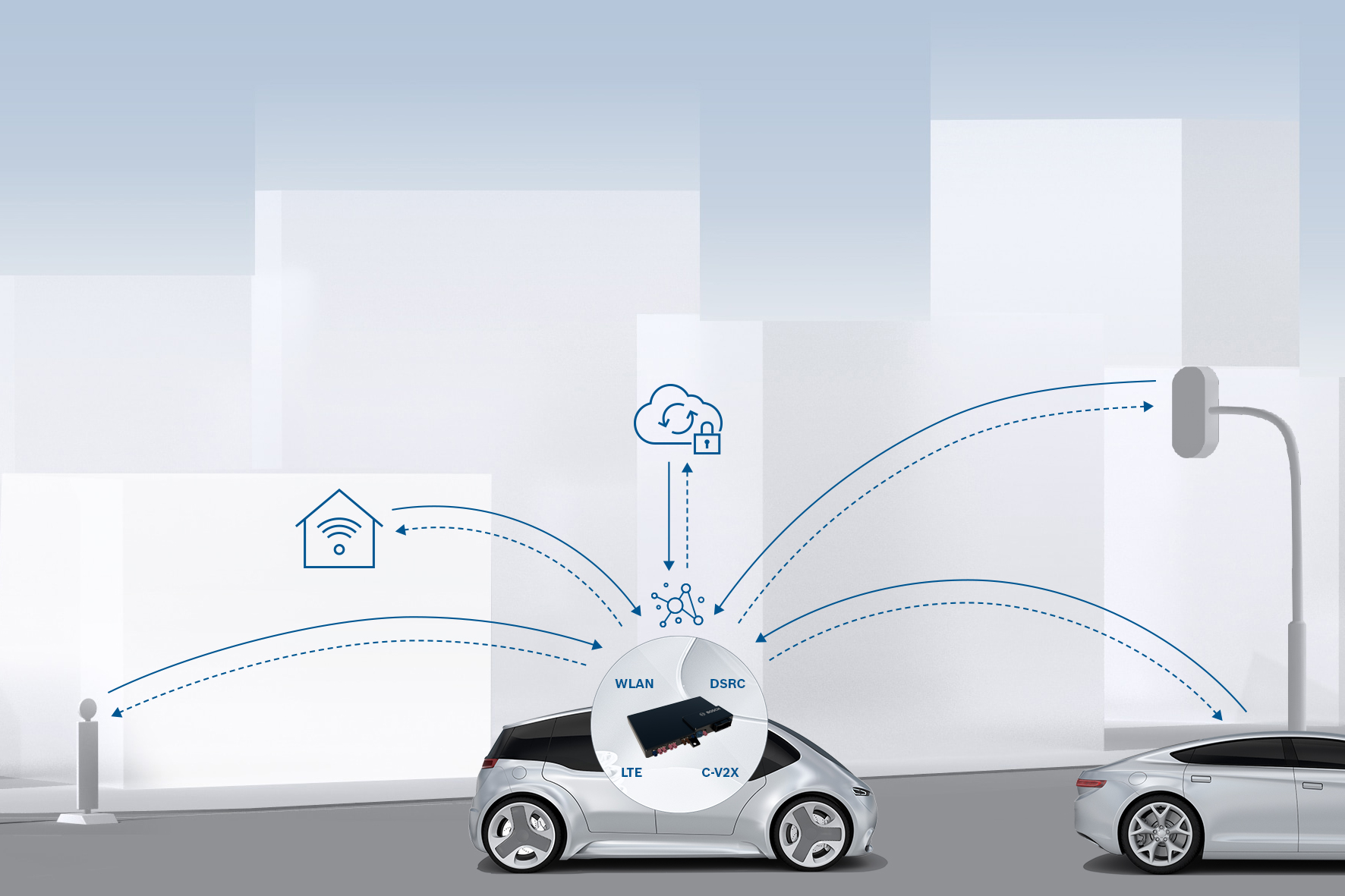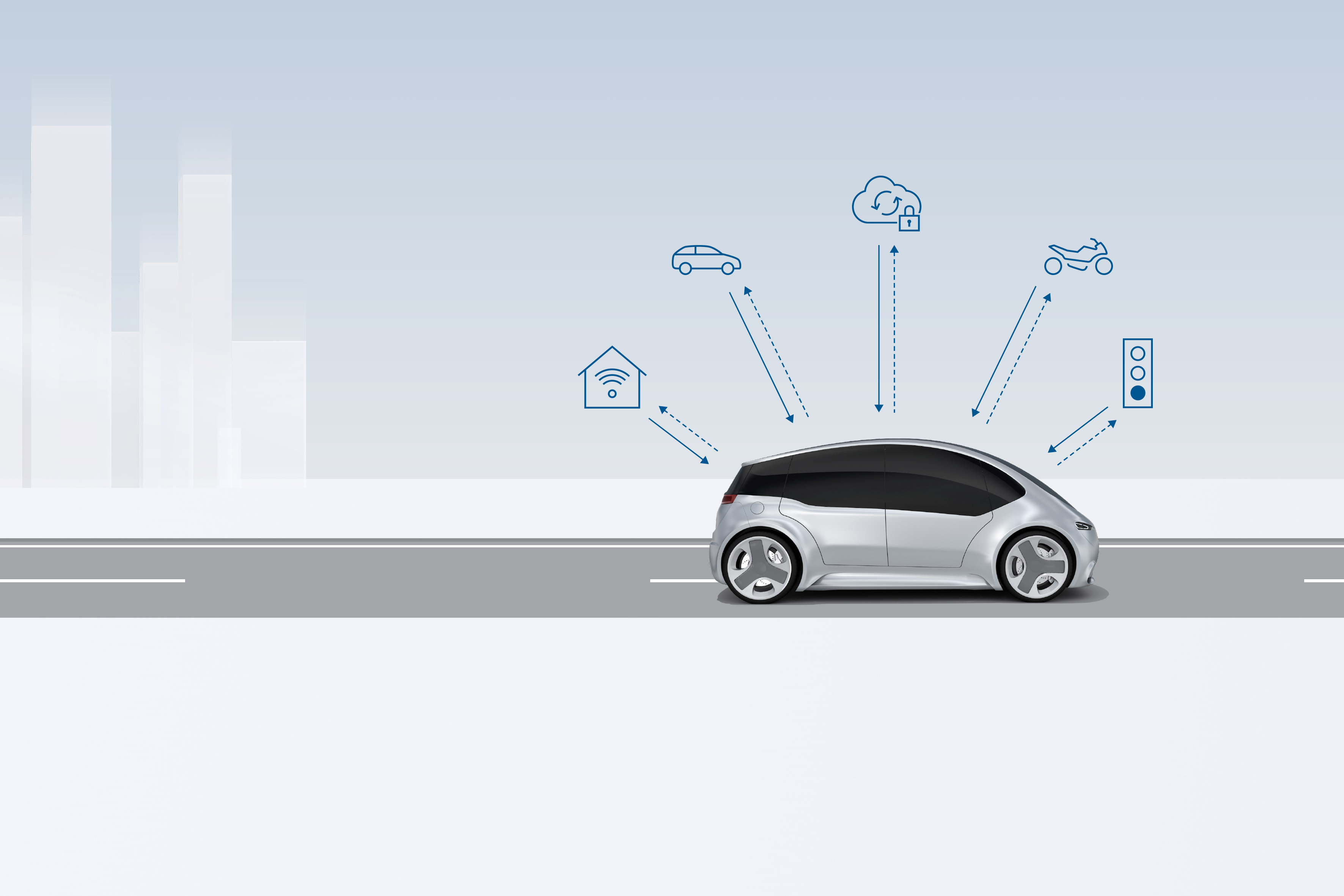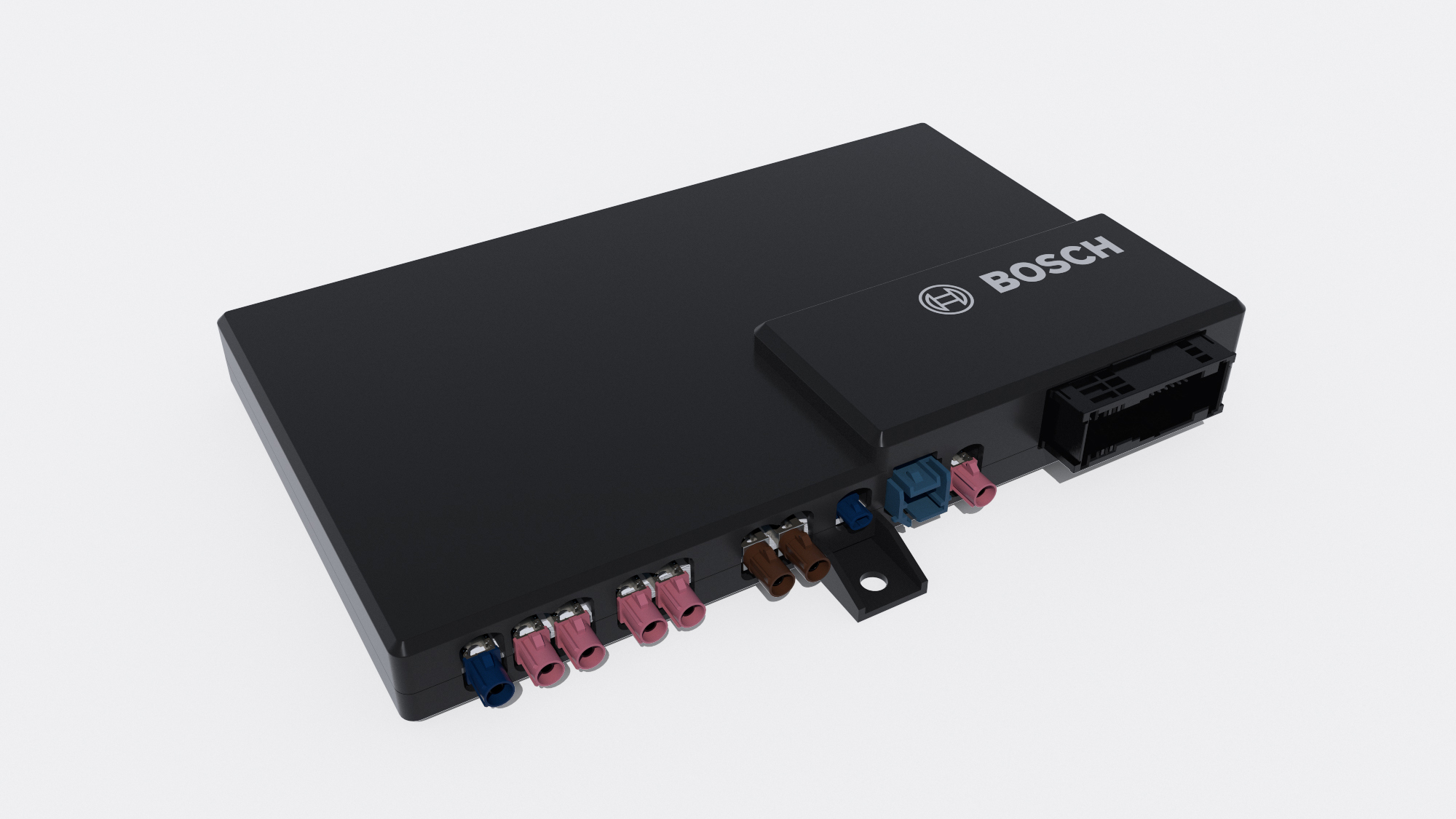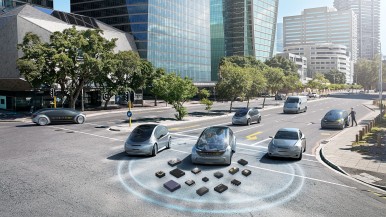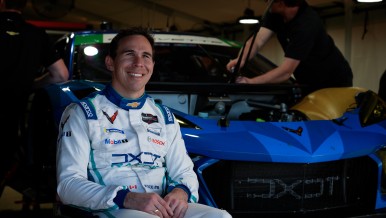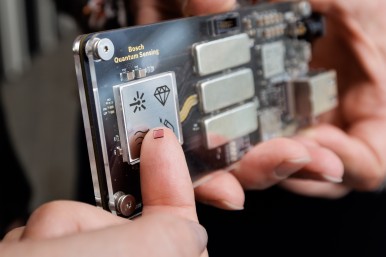Hildesheim, Germany / Mountain View, USA – What is true for people is also true for cars: communication works best with a common language and a good connection. To enable connected and automated driving in the future, vehicles must be able to easily communicate with one another as well as with their surroundings. There is currently no globally standardized technical basis for this exchange of data, which is known as vehicle-to-everything communication, or V2X. Instead, vehicles will in future communicate using the wide variety of different standards implemented by countries and vehicle manufacturers around the world. “Bosch is taking a multi-standard approach when it comes to V2X. We have developed a universal connectivity unit capable of communicating using all of the transmission standards implemented in connected automobiles,” says Dr. Dirk Hoheisel, Member of the Board of Management at Robert Bosch GmbH.
Contact person for press inquiries:
| Annett Fischer, Robert Bosch GmbH phone: +49 711 811-6286 Twitter: @Annett__Fischer | Aline Franco, Veniam Inc. phone: +1 415 470 3349 e-mail: afranco@veniam.com |
Bosch at CES 2019
- PRESS CONFERENCE: Monday, January 7, 2019, 9:00 a.m. – 9:45 a.m. (local time) in the Mandalay Bay Hotel, South Convention Center, Level 2; Mandalay Bay Ballrooms B, C, and D
- TRADE SHOW BOOTH: Tuesday to Friday, January 8 – 11, 2019 in the Central Hall, booth #14020
- FOLLOW the Bosch CES 2019 highlights on Twitter: #BoschCES
About Bosch:
Mobility Solutions is the largest Bosch Group business sector. In 2017, its sales came to 47.4 billion euros, or 61 percent of total group sales. This makes the Bosch Group one of the leading automotive suppliers. The Mobility Solutions business sector pursues a vision of mobility that is accident-free, emissions-free, and stress-free, and combines the group’s expertise in the domains of automation, electrification, and connectivity. For its customers, the outcome is integrated mobility solutions. The business sector’s main areas of activity are injection technology and powertrain peripherals for internal-combustion engines, diverse solutions for powertrain electrification, vehicle safety systems, driver-assistance and automated functions, technology for user-friendly infotainment as well as vehicle-to-vehicle and vehicle-to-infrastructure communication, repair-shop concepts, and technology and services for the automotive aftermarket. Bosch is synonymous with important automotive innovations, such as electronic engine management, the ESP anti-skid system, and common-rail diesel technology.
The Bosch Group is a leading global supplier of technology and services. It employs roughly 402,000 associates worldwide (as of December 31, 2017). The company generated sales of 78.1 billion euros in 2017. Its operations are divided into four business sectors: Mobility Solutions, Industrial Technology, Consumer Goods, and Energy and Building Technology. As a leading IoT company, Bosch offers innovative solutions for smart homes, smart cities, connected mobility, and connected manufacturing. It uses its expertise in sensor technology, software, and services, as well as its own IoT cloud, to offer its customers connected, cross-domain solutions from a single source. The Bosch Group’s strategic objective is to deliver innovations for a connected life. Bosch improves quality of life worldwide with products and services that are innovative and spark enthusiasm. In short, Bosch creates technology that is “Invented for life.” The Bosch Group comprises Robert Bosch GmbH and its roughly 440 subsidiary and regional companies in 60 countries. Including sales and service partners, Bosch’s global manufacturing, engineering, and sales network covers nearly every country in the world. The basis for the company’s future growth is its innovative strength. At 125 locations across the globe, Bosch employs some 64,500 associates in research and development.
To learn more, please visit www.bosch.com, iot.bosch.com, www.bosch-presse.de, twitter.com/BoschPresse.
About Veniam:
Veniam is accelerating future mobility by delivering intelligent networking software for connected cars and autonomous vehicles. With an IP portfolio of more than 160 patents, Veniam's data networking platform makes the most out of all available networks to improve quality of service and reduce the costs of moving massive amounts of data between vehicles and the cloud. Working closely with the world's largest Auto OEMs and Tier 1 suppliers, Veniam aims to improve the lives of millions of people by securely managing the data flows of a new and emerging mobility ecosystem – the Internet of Moving Things – where vehicles move people and goods efficiently but also expand Internet coverage, deliver new human experiences and gather valuable data for smart city applications.
Named by CNBC and NASDAQ as one of the 50 most disruptive companies in the world, Veniam is a global company with its headquarters in Mountain View, California, Engineering Center in Porto, Portugal and sales offices in Detroit, Munich and Tokyo.

